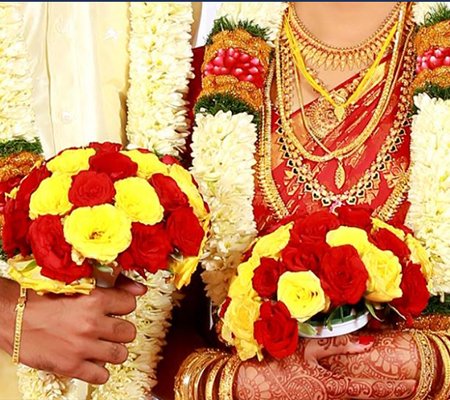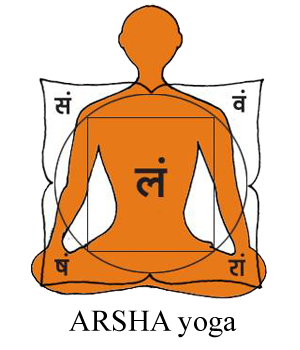Being a Woman and the Concept of an Indian Marriage
“I do” to whom? Not to you but to your whole family!
 As I married into an Indian family, people had asked me about “the Indian marriage” thousands of times and I waited and waited until today. The last drop to my cup of motivation in writing this article was an article in today’s newspaper The Times of India, where an 18-year-old couple was found hanged in a house somewhere in Kerala due to disagreement on marriage arrangements of the daughter with her parents.
As I married into an Indian family, people had asked me about “the Indian marriage” thousands of times and I waited and waited until today. The last drop to my cup of motivation in writing this article was an article in today’s newspaper The Times of India, where an 18-year-old couple was found hanged in a house somewhere in Kerala due to disagreement on marriage arrangements of the daughter with her parents.
Still even today, most marriages in India are arranged. The “other kind” is called love marriage :). Do you ask yourself that arranged marriage is not out of love? Well, the Indians say that love comes after marriage. So there you go!
Anyway, what does arranged marriage really mean? In most cases, it means that families including parents, siblings, uncles, and aunts search for the right partner. This search is a highly sophisticated process. First, it depends on your religion. For my part, I have come into contact with three religions here in Kerala, Hinduism, Christianity, and Islam, even though there are many more in other parts of India. So criteria no. 1: same religion. Criteria no. 2: “sub religion” (in case of Christians the different order or Church, in Islam – Sunni or Shia, in Hinduism – caste). Criteria no. 3: age – some time back groom had to be at least 10 years older than the bride. (Note of the author: And I strongly agree, because men usually mature slower than women. Just to let you know, my husband is 10 years older than me ;). Since then the age difference has decreased but the groom always has to be older at least by a couple of years (Author’s note: too bad for my sister :). The usual age for a groom is 26-28 years and for a bride 23-26 years. But it differs from caste to caste and in Muslim communities, the women are married off usually with 18 years. Criteria no.4: education and profession – the couple should have same level of education and the husband should be financially stable, otherwise FORGET IT! In India nobody is going to marry a Bohemian artist. Maybe better that way as he might not be fit for “one for life” relationship. Criteria no. 5: beauty! Yes, believe it or not. Indians are on the quest for fair skin. The fairer your skin, the higher chance for a potential match. (Author’s note: Should have known earlier…….) And come on, admit it, everybody wants a beauty, whatever the concept of “beauty” is in your mind. So a groom of a darker complexion will only get a bride of a dark complexion and vice versa. Criteria no. 6: horoscope match: at least in before Hindu marriage the Jyotisha (Vedic horoscope) will be compared and five out of 10 criteria have to match. Criteria no.7: space for personal preference (if your parents allow) – non-smoker, non-drinker (alcohol, not water), vegetarian. The families will then conduct a vast search with the help of a so-called marriage broker or through a pages long matrimonial section of the daily press. If they find a suitable match, they will discuss it first over the phone and then meet and discuss again, then call and discuss……Then finally, if the family allows, the potential husband and wife to be are going to see each other and possible exchange a brief conversation.
Let’s have a look at my “score”. Criteria no. 1: 0/5 (my husband is a born Hindu and I was brought up an atheist). Criteria no. 2: 0/5 (different caste, different languages, different culture, and different worlds, even though the same planet Earth). Criteria no. 3: 4/5 Yeah! Scored on this one, even though a little old fashioned. Criteria no. 4: 2/5 I finished postgraduate studies of translation and interpreting and my husband high school, so no comparison there but we ended up both as yoga teachers. So I give myself 2 points out of 5. Criteria no. 5: 5/5 We feel beautiful, at least I do and feel the same way about my husband. Criteria no. 6: 0/5 Didn’t do one as there was no point. But maybe we should do one now ;). Criteria no.7: 5/5 This is my highest score section as it was mine according to my choice. So summoned up I would be a big failure in an arranged marriage, but luckily it was “a love one”.
Now, you might ask yourself (like my mother does) how can you live start living with someone and share the “intimacies”, if you don’t know them beforehand? Well, Indians ask the same question: “How can you live with someone without being married?” So now what?! I will share my reflections on this topic. As an Indian, you are brought up with the idea that one day your parents will choose your partner and you see this tradition as the only reality while growing up, so this will be your ultimate given truth. If you do not know any other way, you won’t also think any other way. It’s as simple as that. Your mind is preprogrammed. Just like if you have a pet cat inside your house or flat and never let her go outside, it will never desire to see nature because it has been trained that way. Not to compare a bride with a cat, but in this case, it is the same concept. This is the first point. Another point is that in an arranged marriage you will try your very best to stay away from expectations as you don’t know the partner. In love marriages, however, you have a certain concept of your perfect partner and you are trying many options hoping to find the perfect match one lucky day. Some people manage on the first try either by pure luck (or in Indian philosophy we call it karma), some manage on the second go and some keep trying their whole life 😉 (that we might call “double karma” :)) But one is enjoyable and the other one is suffering. In an arranged marriage you are marrying for life. That is the concept and in 99% it works. The divorce rate in India is much higher in love marriages. And many times I have thought about all those lonely western friends for whom an arranged marriage, even though maybe not the Indian model, would be an option. I have even tried to arrange a few couples to meet but was highly unsuccessful in my attempt and I could forget my career as a marriage broker for good…….. Thank God! Otherwise, there might be more divorce in the world.
The wedding itself is a life investment for the parents and with the act of marriage they are handing over their child to the partner and his family. They still keep in touch, naturally, but their main responsibility as parents is over. Sometimes they will spend their whole savings towards the marriage expenses and sometimes get into a huge depth due to the dowry system of the bride. Recently, a lady from the neighborhood, who cooks in our house during retreats, came to us asking for money. She always asks for money but this time it was a higher amount. Guess why? Her daughter’s marriage was coming up. For that purpose, they got into a huge depth by taking a loan from charlatan money lenders for high interest to renovate their house and purchase 25 pavan of gold (note: 1 pavan = 8 grams, 1 gram of gold = 3.800 inr) as dowry. It seemed to me that they almost took pride in being able to give so much dowry, even though they would pay with their health and sometimes even with their life later. But in India “later” never comes :).
Wedding hall
The wedding ceremony takes place in a temple in the case of Hindu marriages first, that only the closest family attends. The marriage act itself takes place at an auspicious time called muhurtham calculated according to the planetary constellation. So imagine….. All these precautions are made so it must work out! Then the couple and family move over to the marriage auditorium. Yes, auditorium which resembles a big theatre with a stage, where the “marriage drama” takes place. The couple, the closest family and the wise men are present at the stage and other guests (a modest number of around 1.000) form the audience. Some more rituals are being performed like “tying the knot”, no sorry “tying the taali” which is a gold ornament in a teardrop form that the newly married should wear her whole life. After the ceremony which can take anywhere between 1 and 4 hours depending on the caste, there is sadya – festive meal served on a banana leaf. As Indians are masters in organising mass gatherings, cooking for more than 1.000 people is a piece of cake. For young Indian boys, it might be a popular way to kill time by what can be called “marriage feast hopping”. They sometimes attend marriage feasts without knowing the married couple or family because even the family doesn’t know everyone. Traditionally, after the wedding ceremony, the bride moves to the husband’s house and lives there with his parents. For most ladies in the West, it is a scary idea to share their living space with their mother-in-law, yet this tradition was set up mainly for the elders to be taken care of.
Even though the act of marriage itself has diminished in the course of social development today, the finding of a life-time partner stays a priority as it is a natural biological need of a human being and especially in the case of women who look for security and protection for themselves as well as their children. Marriage is a granting media for the female role of motherhood, care and endless love as well as for the male role of the “family security guard”. Any violation of these male and female polarities may lead to psychological imbalance that later manifests in the form of low libido, irregular or missing menstruation cycle, infertility, cysts, lack of self-confidence and self-value, unfulfilled partnerships etc. Now, despite any cultural or social tradition, let’s not forget our role as daughters, lovers, mothers, wives and grandmothers. Let’s not try to GAIN power by fight and force but rather BE powerful by tenderness, love, care and compassion.
Jay Ma!



